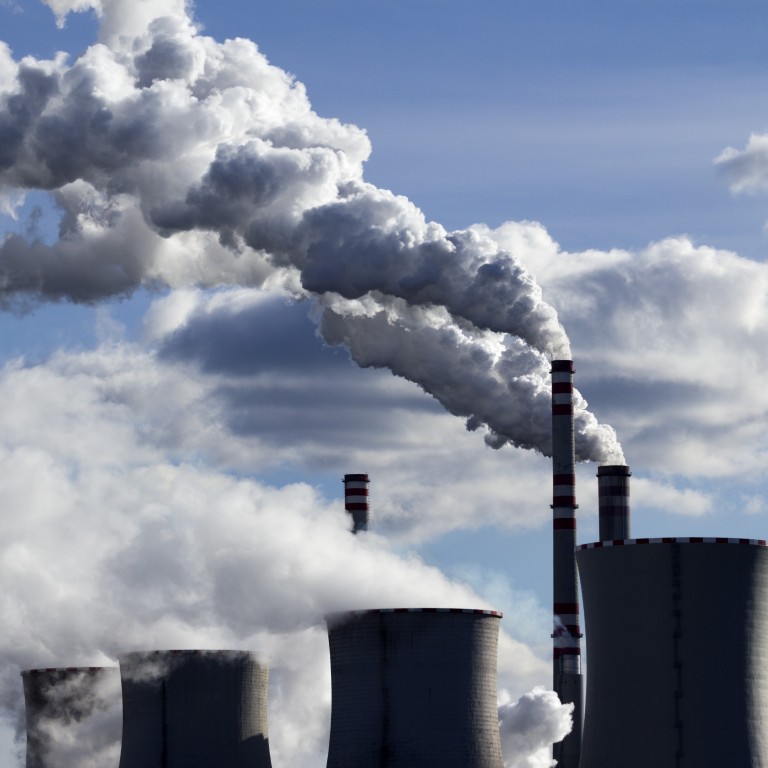
China’s carbon neutral goal: Hitachi to build world’s biggest plant in Shaanxi to mix carbon dioxide, hydrogen into methane
- Plant is one of 14 new projects announced during the Japan-China Energy Conservation and Environment Comprehensive Forum
- Hitachi Zosen will deploy its technology in cooperation with potential partners at Yulin Economic and Technological Development Zone
Hitachi Zosen, a Japanese sustainable energy engineering company, will build the world’s largest facility to produce methane from carbon dioxide and hydrogen generated at a coal-based industrial zone in Shaanxi province. The facility, a pilot project, is part of a Sino-Japanese collaboration on carbon reduction.
Osaka-based Hitachi Zosen, a 139-year-old former shipbuilding giant that now focuses on energy from waste, desalination plants engineering and industrial equipment manufacturing, has joined forces with government-mandated Japan Coal Energy Centre, which promotes clean coal consumption, for the project.
“Hitachi Zosen aims to realise a low-carbon, recycling oriented hydrogen society in China through the implementation of our methanation technology,” a spokesperson said. “Methane has almost the same composition as natural gas and can be used as an alternative to fossil fuels.”
Neutrality means any residual carbon dioxide emission after reduction measures is fully offset by amounts captured from the atmosphere.
Chinese firms must step up climate disclosures as they fail to meet standards: LGIM
While the methanation process using nickel as a catalyst was discovered by French chemist Paul Sabatier almost 120 years ago, the spokesperson said Hitachi Zosen and Tohoku University developed a catalyst in 1995 that gives its process the world’s highest performance. This process synthesises methane – the main component of natural gas – through chemical reactions between hydrogen and carbon dioxide.
It is not yet known whether the proposed demonstration project will receive a subsidy from the Chinese government.
Hitachi Zosen will deploy its technology in cooperation with potential partners at the Yulin Economic and Technological Development Zone in northern Shaanxi province, and replicate it in other parts of China. The project, expected to be operational in the mid 2020s, could meet 30 per cent of the industrial zone’s methane demand, and will be able to source low-cost hydrogen generated by its chemical companies, Nikkei Asia reported.
China looks to market prices to meet Xi Jinping’s 2060 carbon neutrality goal
Located in Shenmu county, the “coal capital” of China, the zone consists of four industrial estates housing companies engaged in coal-fired power generation, coal to chemicals conversion, building materials, advanced materials and renewable energy production.
“While details of the demonstration project will be decided in the future, we are aiming for a capacity to produce more than 3.5 million cubic metres of methane a year, which will be the largest in the world,” the spokesperson said, declining to provide any cost estimates. It will require the same amount of carbon dioxide.
Currently, the German Audi e-gas plant in northern Germany built by its German unit, Hitachi Zosen Inova Etogas, is the world’s first industrial-scale synthetic natural gas plant that uses hydrogen produced by renewable energy and recycled carbon dioxide as feedstock. Its annual production capacity is 2.85 million cubic metres.
China looks to carbon capture and hydrogen to push industries towards 2060 target
Although the burning of methane will release carbon dioxide, the spokesman said the emission can be recovered and reused to generate methane again by applying renewable energy produced hydrogen, which creates a sustainable way to recycle carbon dioxide.

